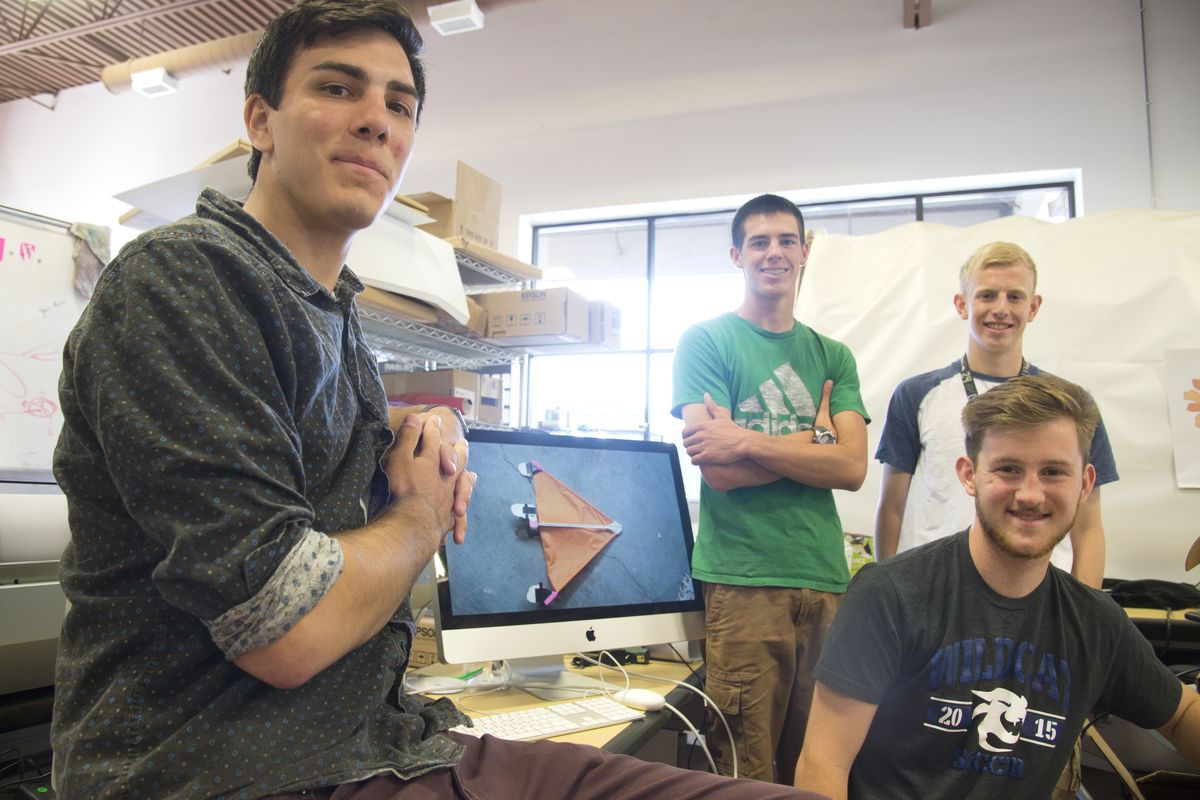EWU, Mead students set to launch collaborative rocket, plane project

Seven high school students from Mead have joined a team of rocket builders from Eastern Washington University to drop a remote-controlled plane from 10,000 feet in the air.
At a four-day competition starting Wednesday in Green River, Utah, the team will take on other universities to see whose rocket is most worthy of flight. The 10-foot-3-inch rocket, built by the EWU students, will carry the plane, built by students of the Riverpoint Academy in Mead.
The launch will be the culmination of thousands of hours spent researching, designing and building the rocket and its 40-pound solid fuel engine.
“All the simulation data shows we’re going to get pretty close to 10,000 feet,” said Spencer Scott, the EWU senior who led the design team for the rocket’s fiberglass body.
Riverpoint is an alternative high school in the Mead School District that focuses on STEM fields – science, technology, engineering and math. In what used to be the showroom of a motorcycle dealership on the Newport Highway, students build projects using high-tech equipment like laser cutters and 3-D printers.
The school’s rocket team includes Connor Hawkes, Jared Timme, Liam Maddox, John Becker and Alex Yoho, all 17-year-old juniors; Maddox’s brother Aidan, 15; and Max Delsid, 18, who graduated about a week ago.
Since December, the team has built many prototypes and conducted more than 100 test flights, often throwing foam-and-aluminum planes off the roof of their school. After many failed designs and a lot of tweaking, the students settled on a collapsible, swept-wing glider made of fiberglass and nylon fabric.
“They built several prototypes and crashed them in order to learn what worked,” said their teacher, Rick Biggerstaff, noting that each student brought a unique skill set. “The collaboration’s been real fun to watch.”
Liam Maddox said, “Our plane is about as novel as it gets.”
If all goes according to plan, the rocket’s nose cone will break away at 10,000 feet, and the plane will emerge from within, spreading its bat-like wings. A propeller will start spinning, and Hawkes, controls in hand, will guide the plane to a safe landing.
“It’ll be like a flight simulator,” he said, pointing to the large flat-screen TV that will give him a pilot’s view on the ground, thanks to a high-definition camera mounted on the plane.
The team considered using a cheaper camera but opted for a high-def GoPro, which made it harder to beam video signals down from the sky.
“When we got into this, we didn’t know what went into getting a solid video feed from two miles in the air,” Delsid said. The solution: “Wiring. A lot of wiring. We ordered a lot of parts from overseas, Chinese companies, and they didn’t come with instruction manuals.”
The Riverpoint Academy opened three years ago and currently teaches about 140 juniors and seniors. Principal Moleena Harris said the school has room for more students and should open up to freshmen and sophomores within the next few years. About half the school’s students are girls – although women are underrepresented in STEM fields – and about a third transfer from other school districts.
“We treat students like adults, and we try to give them practical experiences that will prepare them for college,” Harris said.
Biggerstaff said about 95 percent of Riverpoint students go on to college. Delsid next year will study entrepreneurship and cinematography at Grand Canyon University in Phoenix, and the other rocketeers plan to pursue engineering degrees.
“The homework that goes home is something they’ve generated,” Biggerstaff said. “They build to learn, and my role as a teacher is just to collaborate.”
Professor Marty Weiser and several EWU students were driving the rocket to Utah on Monday. He said it’s the first time he’s prepared students for a competition in his five years at the university. About 25 students from several classes, split into five design teams, contributed in various capacities.
“It’s the first time I’ve had enough students who were interested,” Weiser said.